An elegant, occasionally massive fungus, Berkeley's polypore (Bondarzewia berkeleyi) is a fascinating and slightly confusing edible mushroom. Although they're similar to other edible polypore mushrooms like hen of the woods and black staining polypores, these mushrooms aren't often discussed as an edible species, but they most definitely are, with a few caveats. Today we'll go over what you need to know.
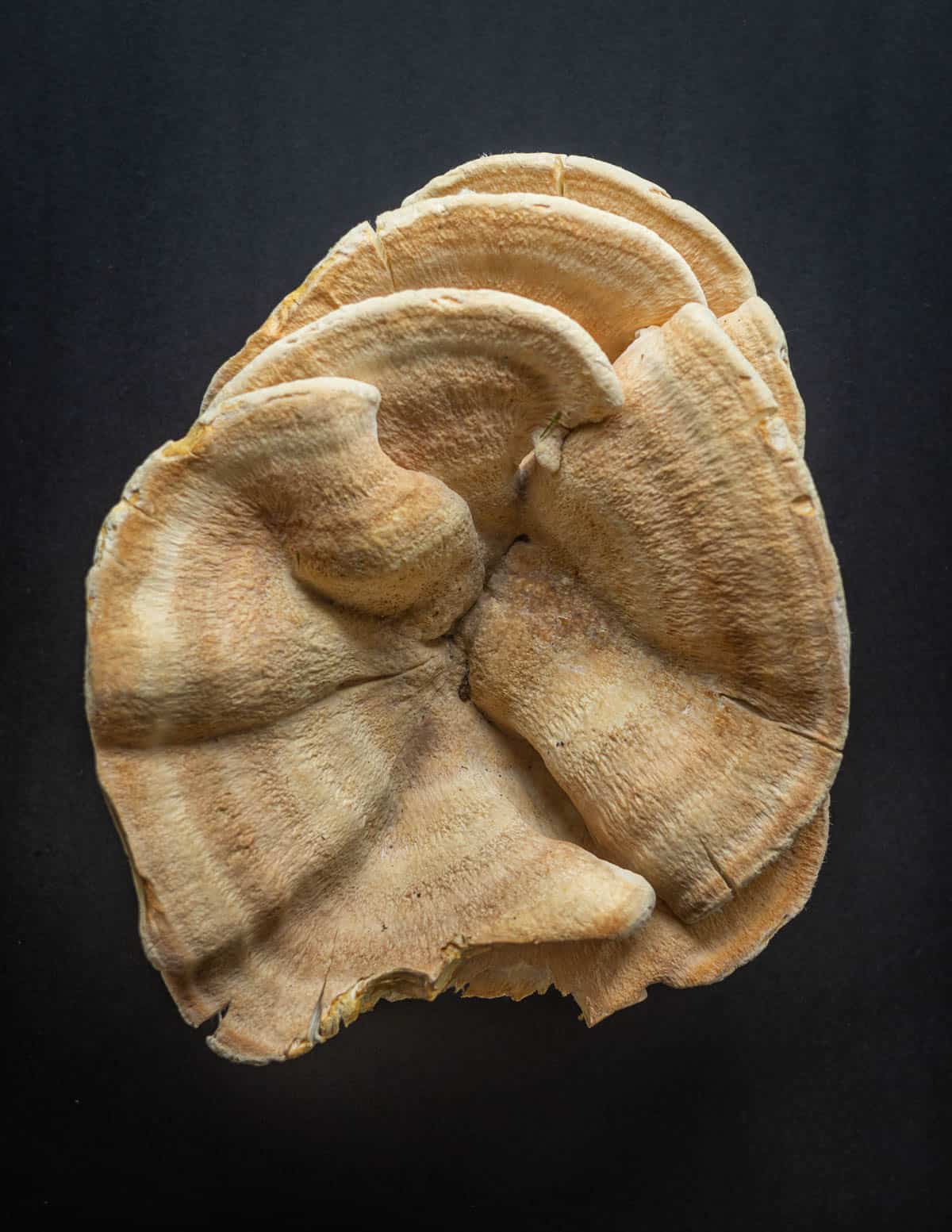
Similar to chicken and hen of the woods, Bondarzewia berkeleyi (formerly Polyporus berkeleyi) is a parasitic fungus that causes a butt rot in trees, appearing at the base of hardwoods like maple and oak trees. It's common and widespread in Eastern North America past the Great Plains, but rare where I hunt mushrooms in Minnesota and Wisconsin.
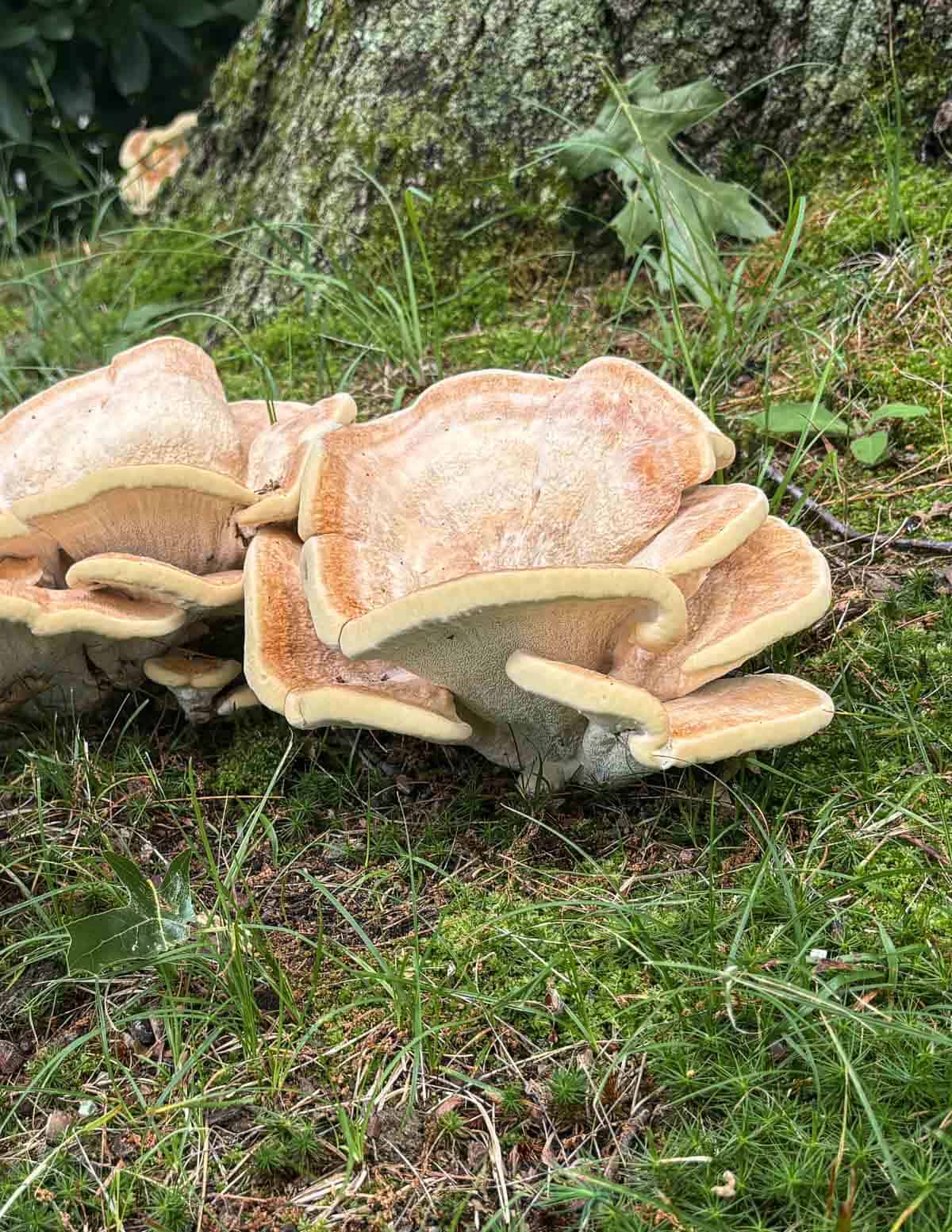
A related species, Bondarzewia occidentalis (previously known as Bondarzewia mesenterica / Bondarzewia montana) fruits on coniferous trees in Western North America. It has a darker, brown cap where B. berkeleyi has a creamy to beige-colored cap.
Another thing worth mentioning (mostly for academic purposes) is that B. bondarzewia is genetically closer to mushrooms in the Russula family (Russulaceae) than the Polypore family (Polyporaceae). That said, one taste and most mushroom hunter will probably say Berkeley's polypore tastes like a mild chicken of the woods.
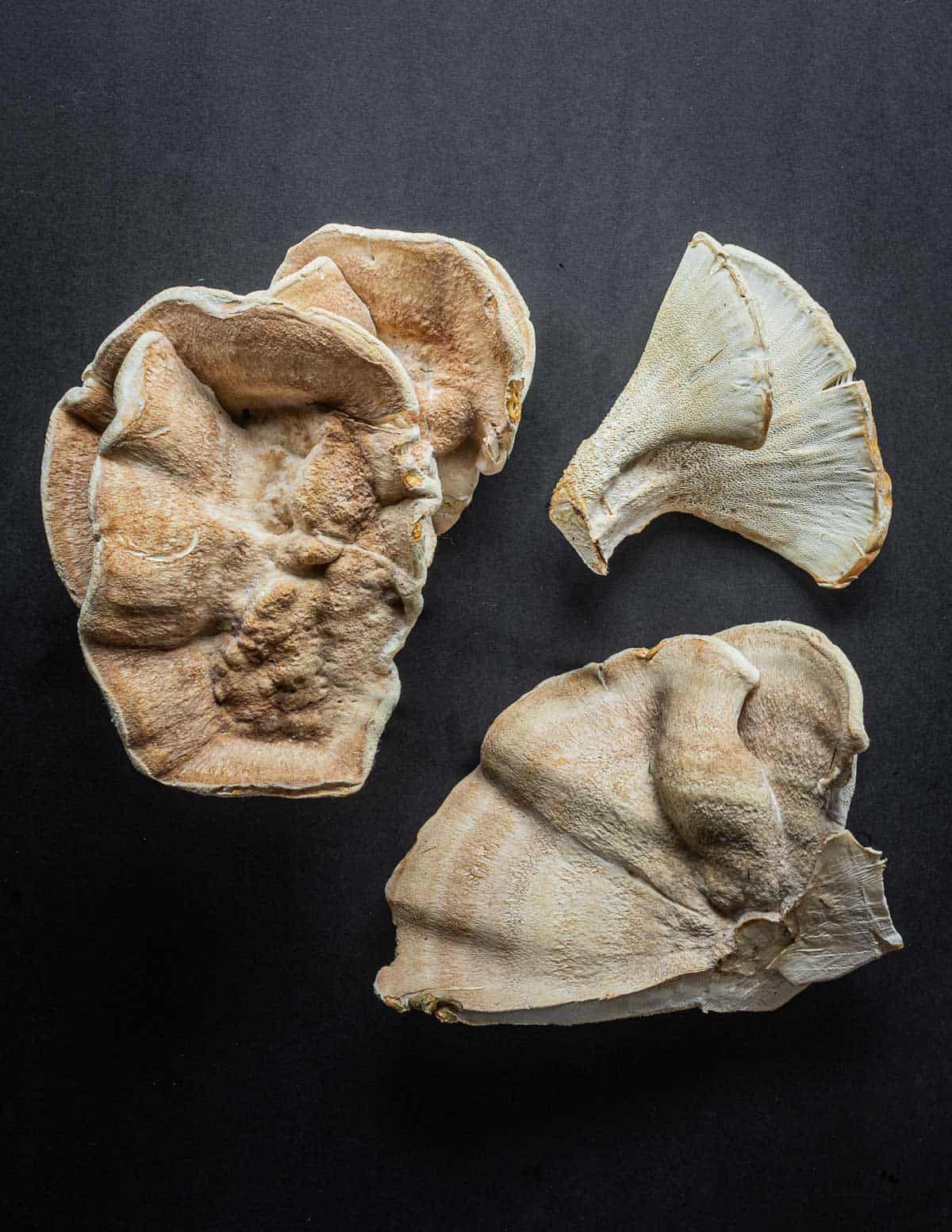
Special thanks to my friend Andrea who was nice enough to overnight the gorgeous young Berkeley's polypore pictured in this post from around Boston.
Berkeley's Polypore Identification
The mushrooms appear in a rosette shape at the base of oaks and other hardwood trees like maples in the Summer and Fall. Other foragers I've spoken to say theirs usually appear in July and August. They're often found at the same time as black staining polypores-a similar edible mushroom that also grows on dead deciduous trees.
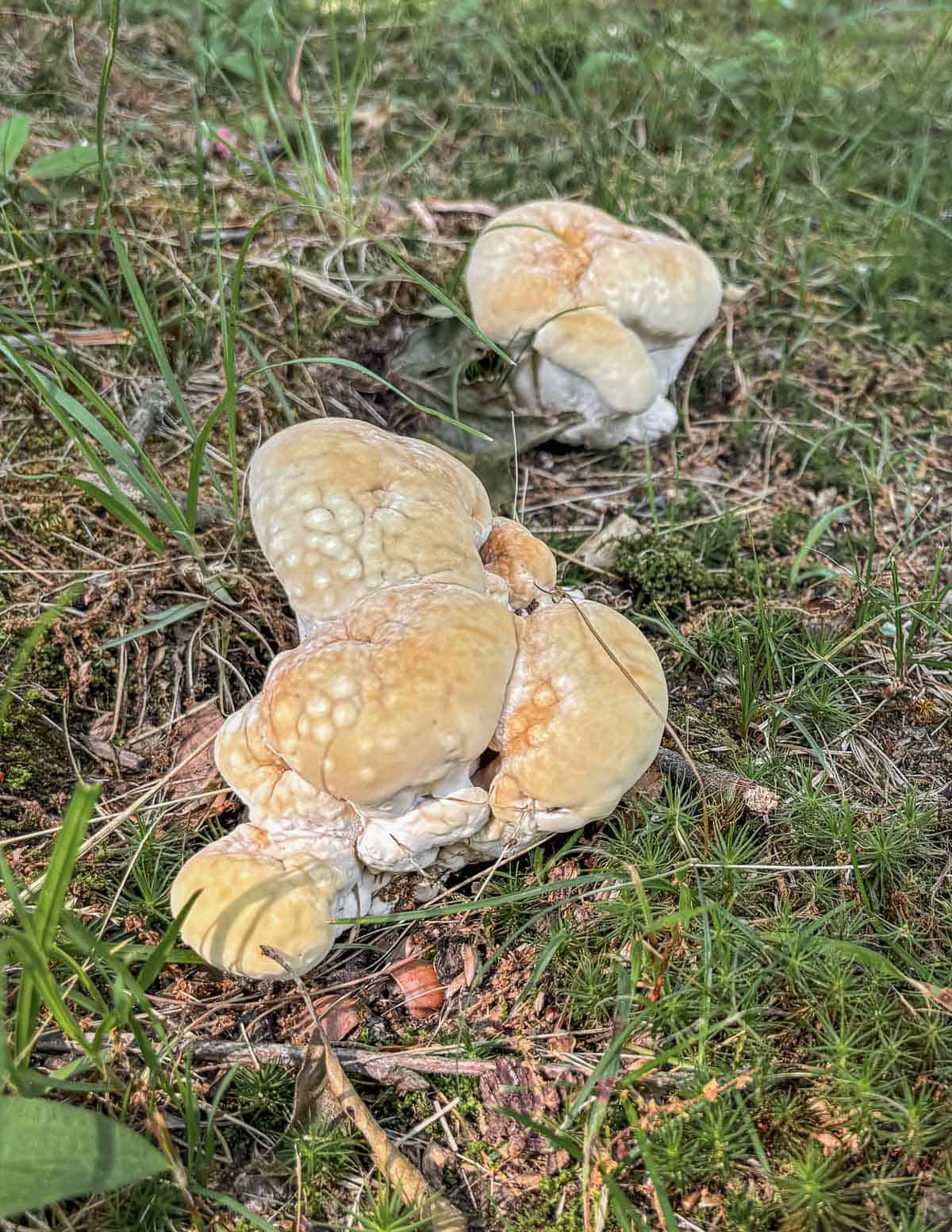
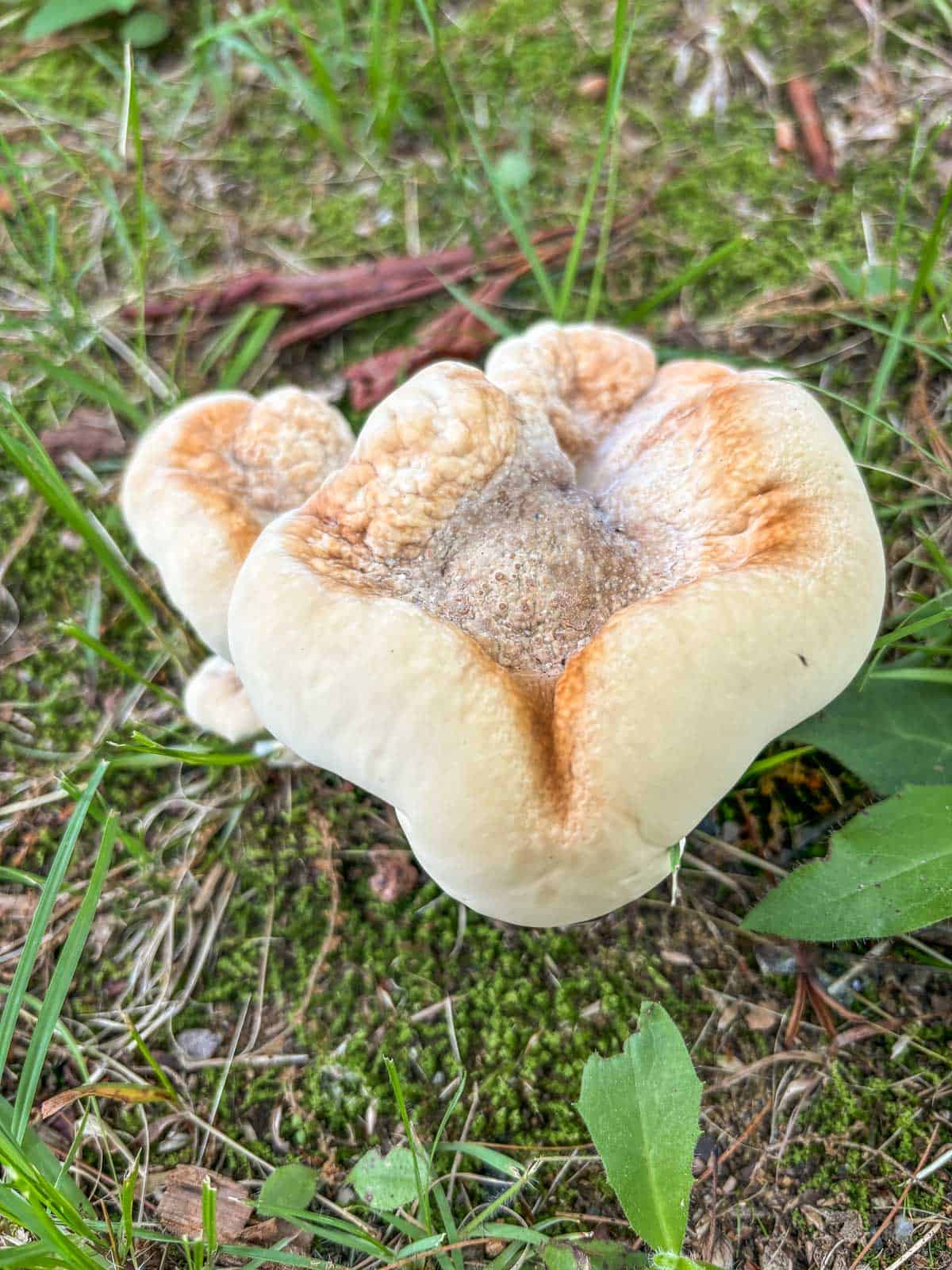
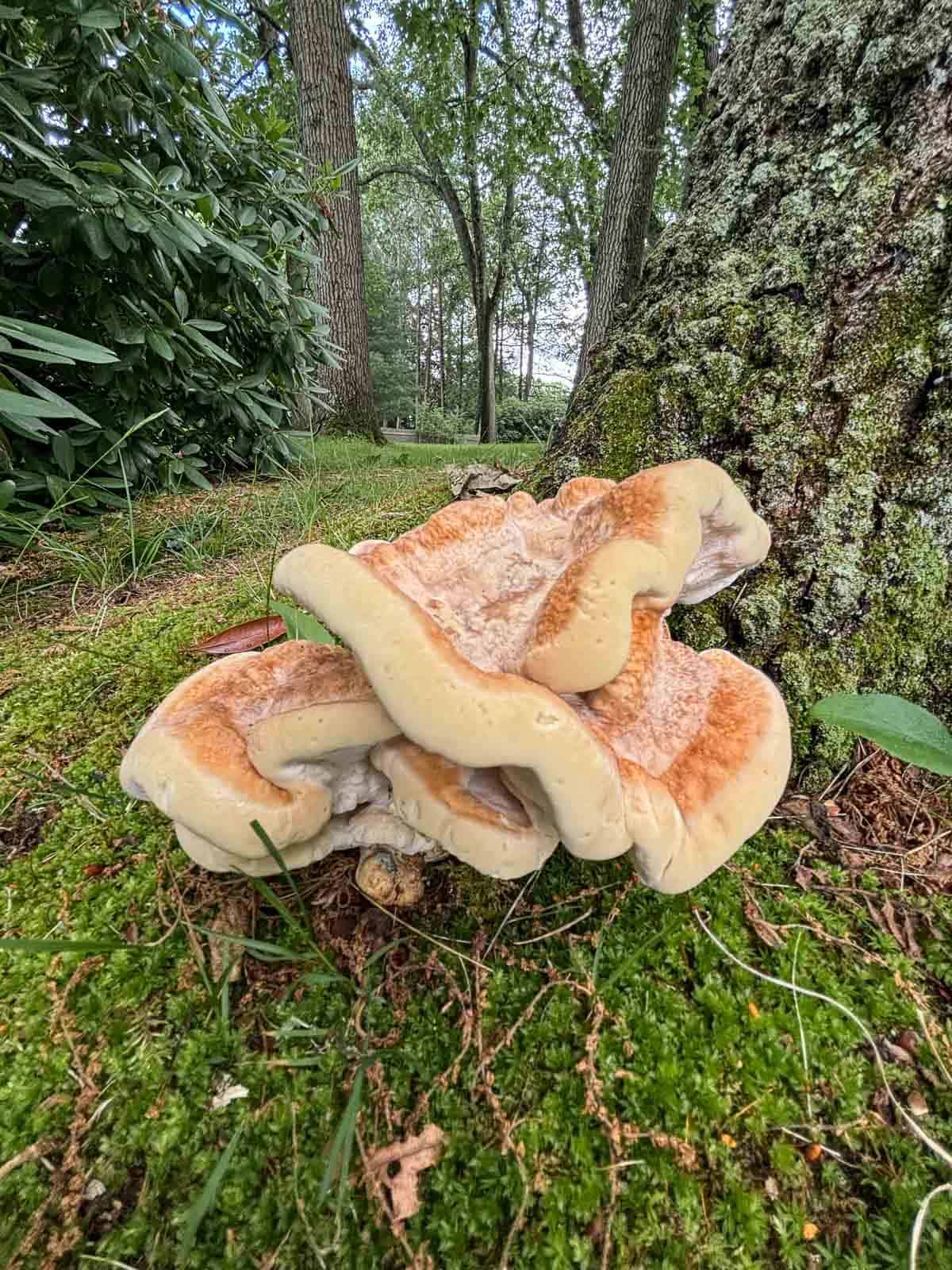
The pore surface is unique and reminds of dryad saddle / pheasant back mushrooms. They start out circular in young mushrooms, becoming more angular and shaggy with age.
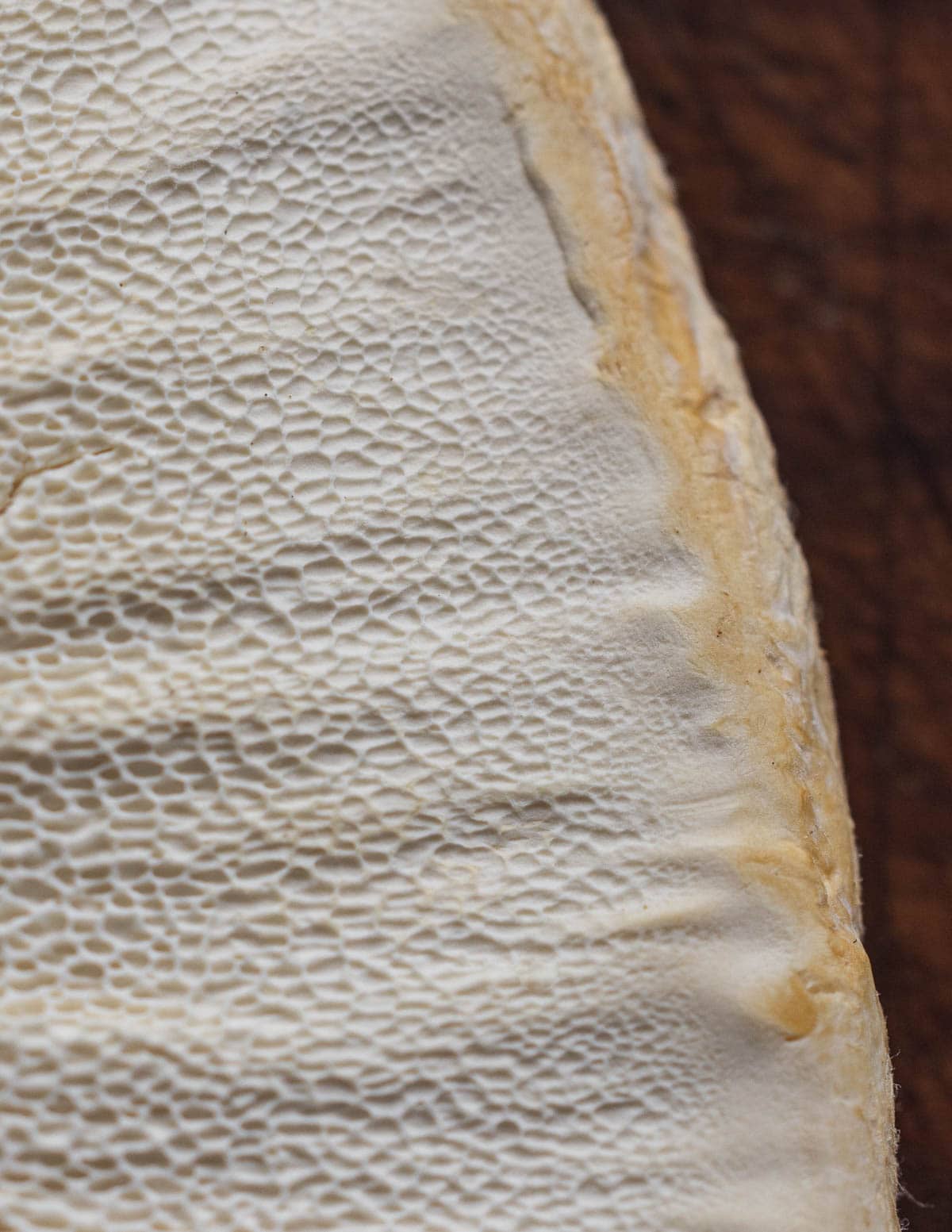
Take a look at the image of the Berkeley's polypore underside below. Just like the pheasant back, caps with young, smooth pores on the edge indicate a mushroom worth picking. Note how the pore surface moves down the stem.
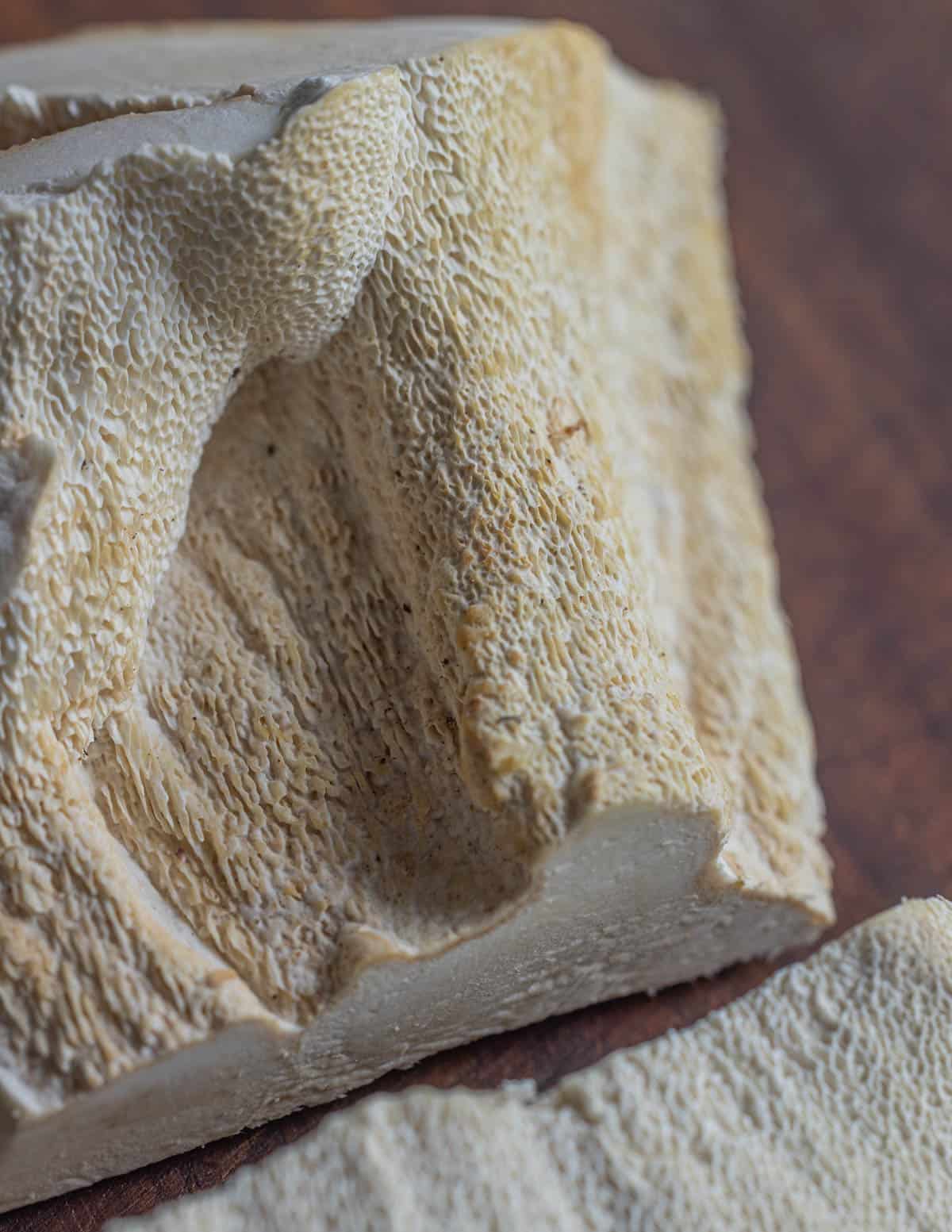
Berkeley's Polypore Look Alikes
There's a number of look-alikes that will confuse beginning mushroom hunters. The good news is all of them are edible (and delicious) as long as they're young and tender. I put the most common into an infographic below. Once you see them side by side identification is easy. Some include cauliflower mushrooms as a look alike, but I think that's a stretch.
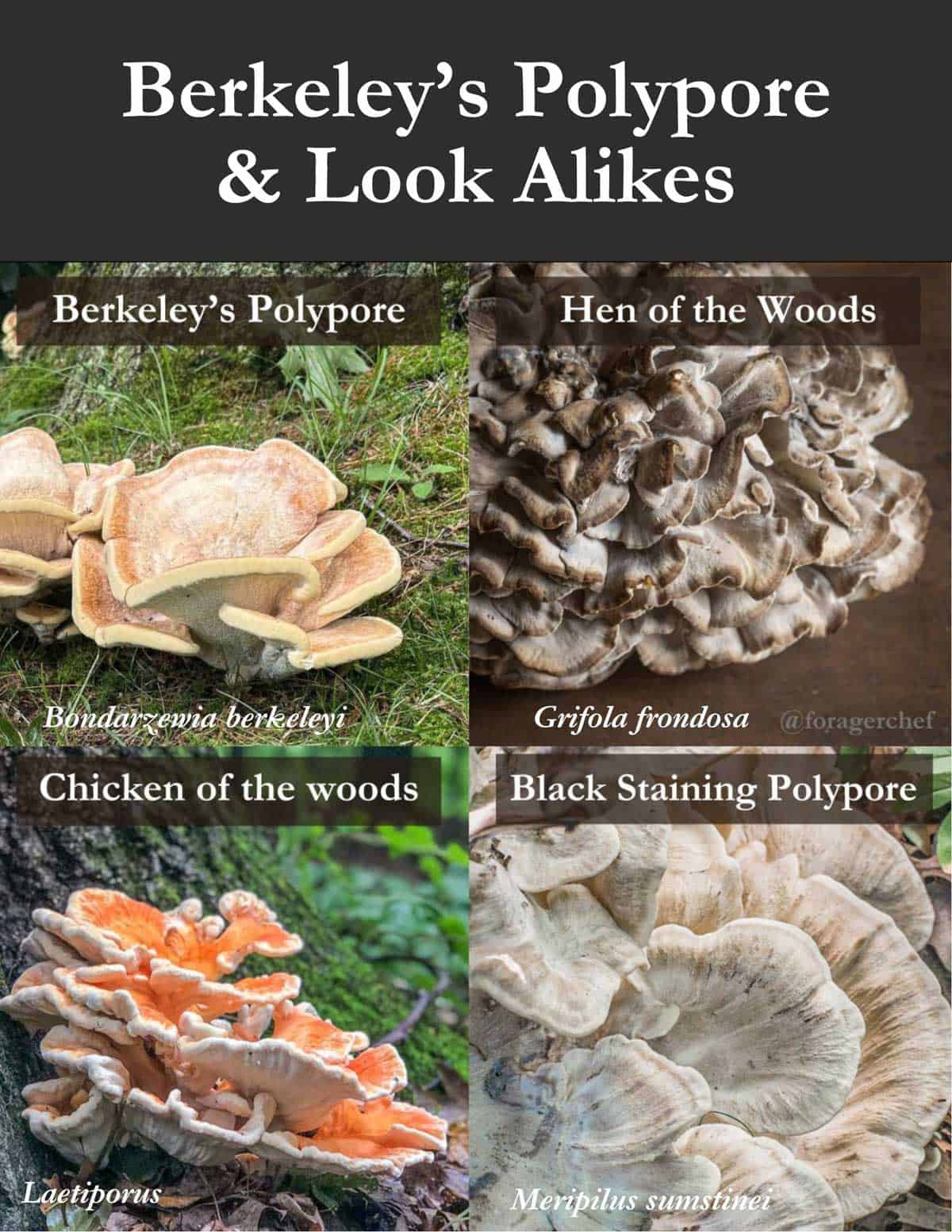
Here's a few key points to help distinguish B. berkeleyi from its cousins.
- Black Staining Polypore (Meripilus sumstinei) is similarly colored but bruises black. B. berkeleyi doesn't bruise.
- Chicken of the Woods (Laetiporus) are yellow or orange in color where B. berkeleyi has a cream to beige colored cap surface that can appear white when young.
- Hen of the Woods (Grifola frondosa) has a dark brown cap surface. The cap surface is also thicker at maturity where B. berkelyi becomes thin, and extremely tough.
Is Berkeley's Polypore Edible?
Berkeley's polypore can be good to eat, but they're only edible when young. First hand accounts of eating Bondarzewia berkeleyi from reputable sources are few and far between, and guide books can be confusing. My Falcon Guide to Wild Mushrooms lists it as inedible where the Audubon Society Field Guide to Wild Mushrooms lists them as edible.
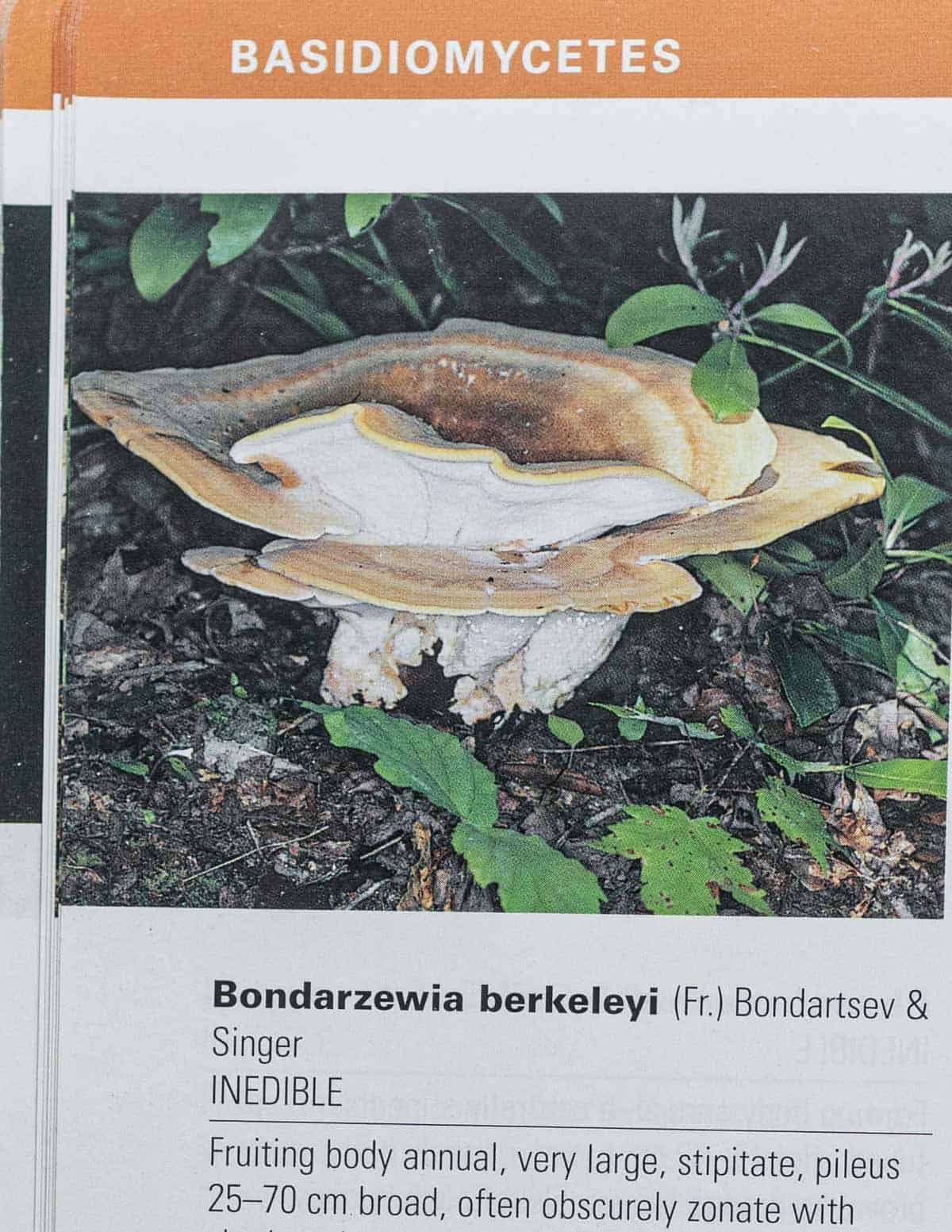

Michael Kuo doesn't cover them in 100 Edible Mushrooms or Mushrooms of the Midwest, but his online profile covers the basics, sans edibility. A host of websites claim the mushrooms is edible, but tangible proof like recipes and images is scarce, and the information available often reads like paraphrased hearsay.
Edible or inedible, one thing that's certain is the mushrooms aren't poisonous. I ate about two pounds in a week without issue. Like any other mushroom, some people won't be able to tolerate them or could have a sensitivity. Finally, like most edible polypores (sans beefsteak mushrooms / Fistulina hepatica) they should probably not be eaten raw.
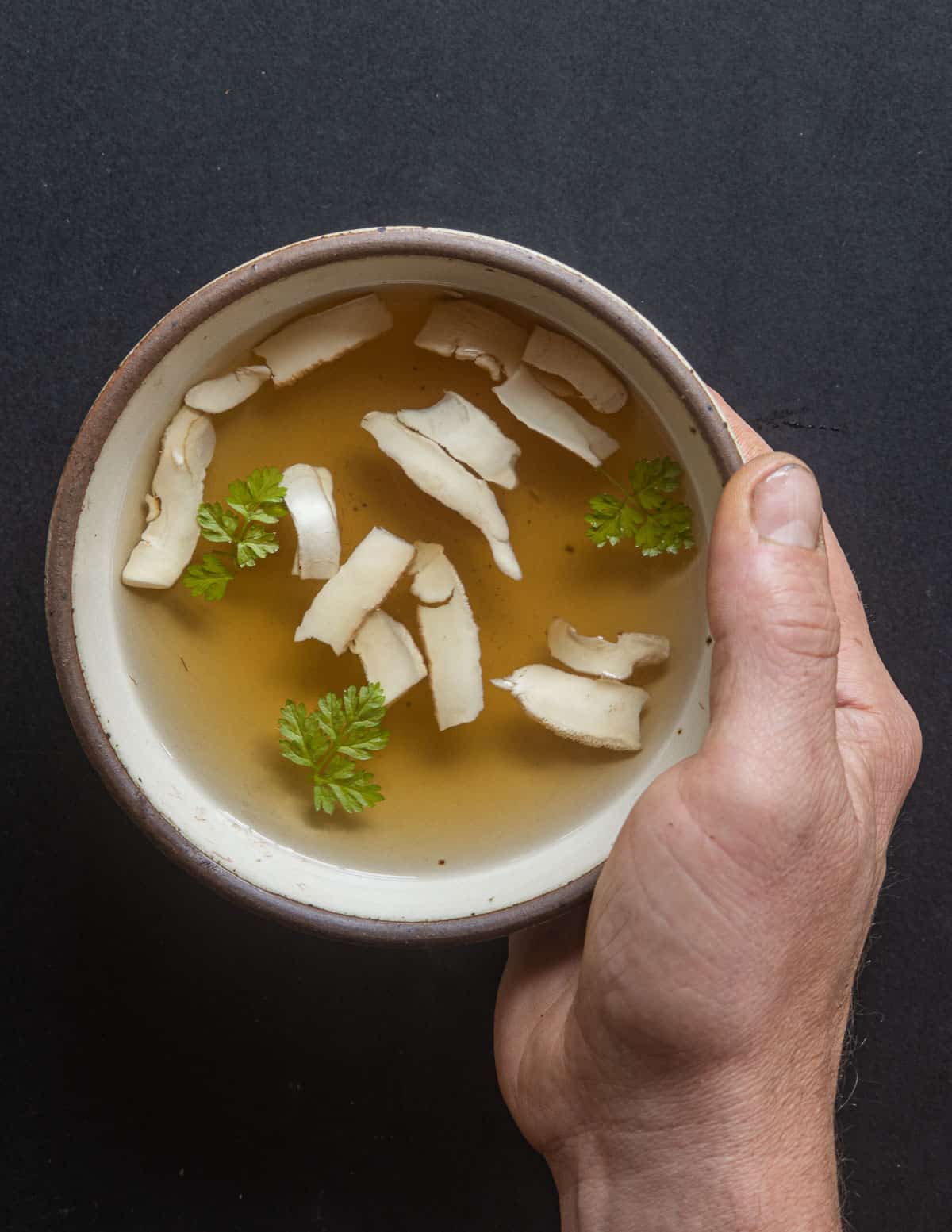
How to Prepare Berkeley's Polypore
The most important thing to know about eating Berkeley's polypore is that they need to be young and tender. The perfect moment to harvest them is when the caps are newly expanded as pictured in this post.
To prepare the mushrooms for cooking, the first thing to do is break the mushroom into individual caps and cut off the tender margin as shown below.
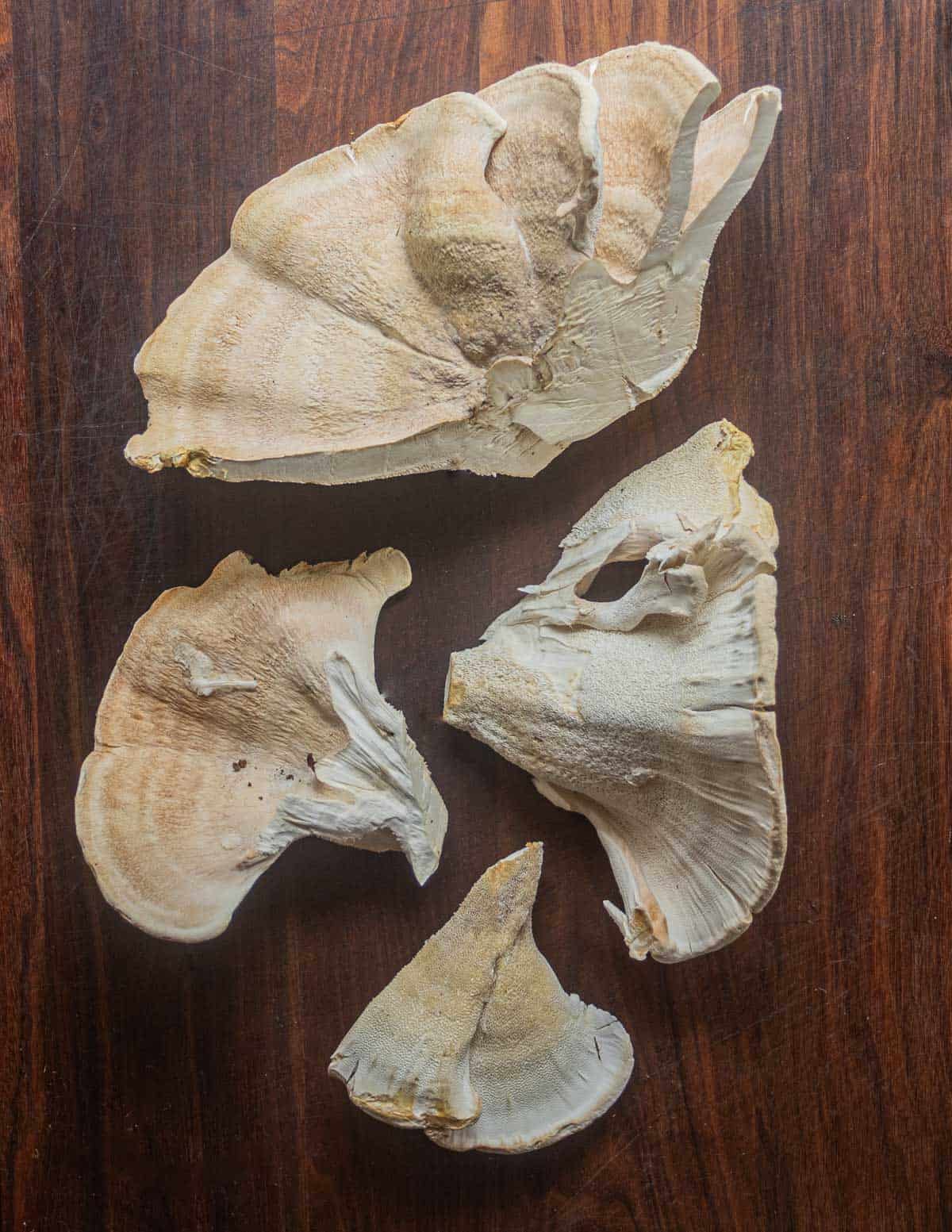
Just like the black staining polypore and resinous polypore, only a couple inches of the young growing margin is edible. While the mushrooms are relatively common, finding young specimens with tender edges is difficult, and most mushrooms found are often too tough to eat. Older mushrooms are also said to have a bitter flavor.
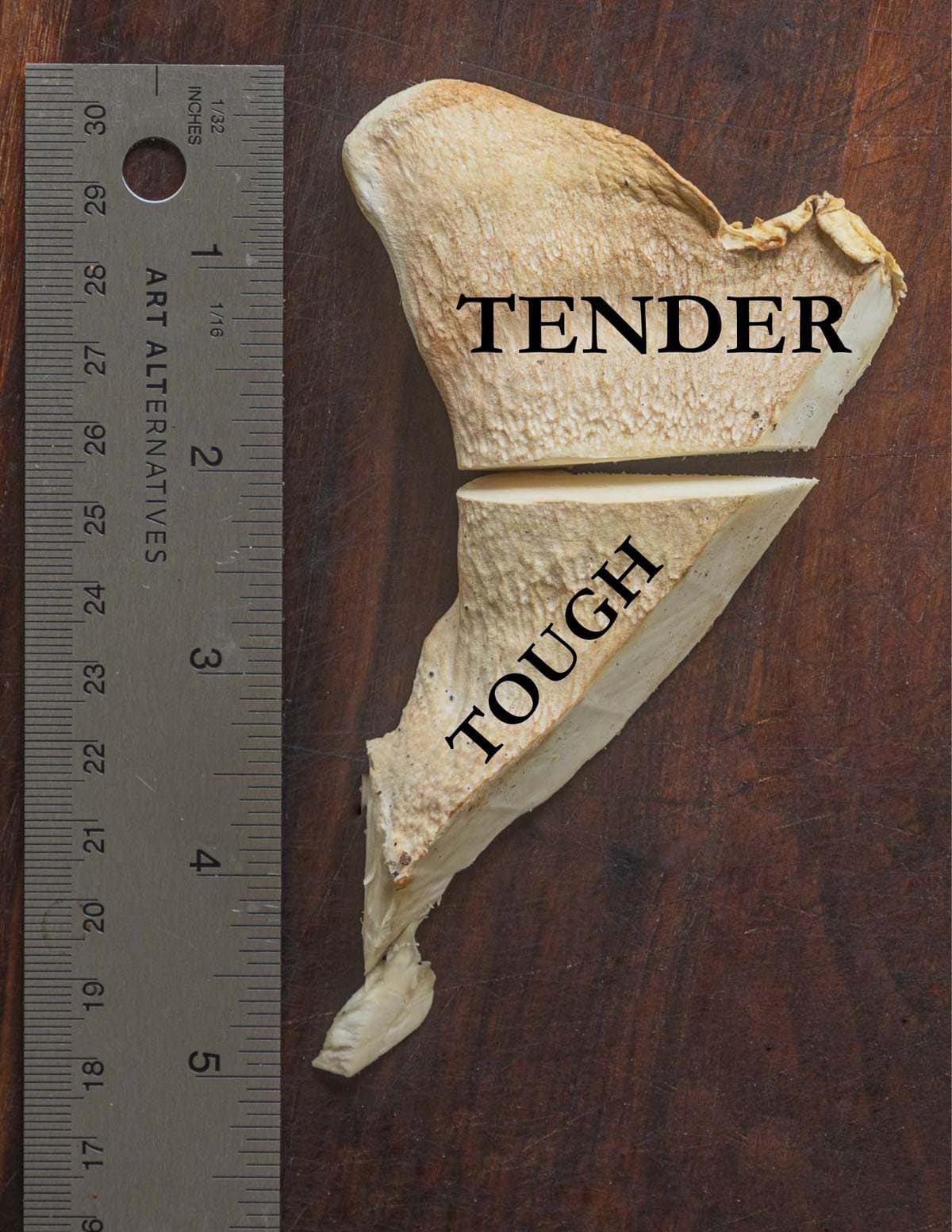
Yield will vary with age, but I was able to get about 2 inches of sliceable mushroom from each cap. The tougher bottom portion can be used for stock or broth. But, the flavor hasn't impressed me made with fresh or dried mushrooms using my tried and true recipe for black staining polypore.

After the tender margin is removed the mushrooms can be processed just like pheasant back mushrooms, meaning they must be sliced very thin to be tender, even when young. That means ⅛inch-1/32 inch slices and no thicker than ¼ inch.

Unlike pheasant back mushrooms that are easily cut with a mandoline slicer, I've found a sharp paring knife much better for getting paper thin slices of mushroom.
Once the tender edges are thinly sliced they can be cooked as-is or finely chopped to use in things like mushroom duxelles, stuffing, pasta fillings and sauces, or used as a meat substitute for recipes like taco filing. I've seen large amounts put through a meat grinder.
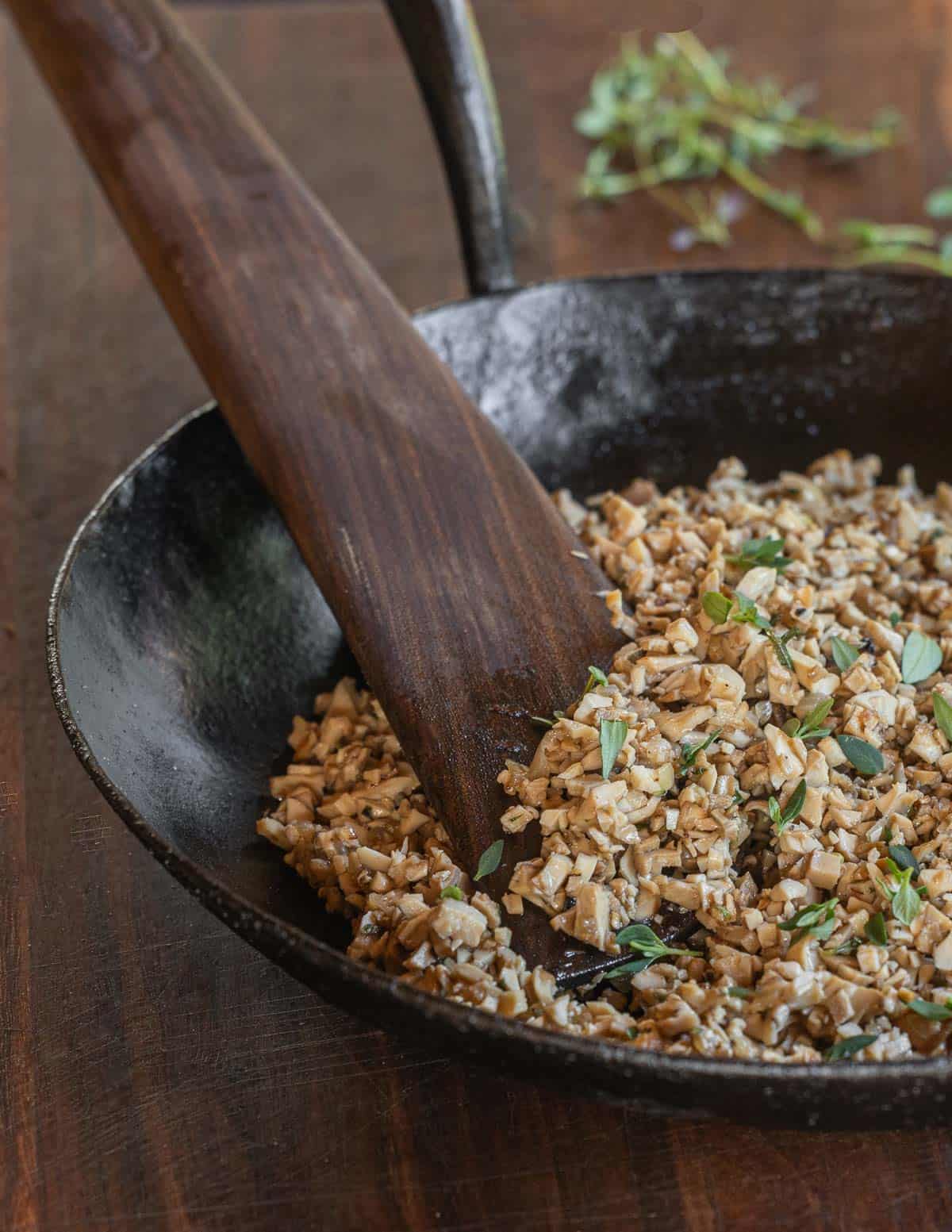
Cooking Berkely's Polypore
The young mushrooms pictured in this post I ate had a mild mushroom flavor that tasted distinctly like chicken of the woods, but milder and without any tartness. The flavor was less-noticeable when used in recipes. People that don't like chicken of the woods might find they enjoy a young B. berkeleyi shaved paper thin.
A faint to moderate bitter flavor is often mentioned with these mushrooms, especially older ones. I'm familiar with different levels of mushroom bitterness but the young mushrooms in this post were perfectly fine.
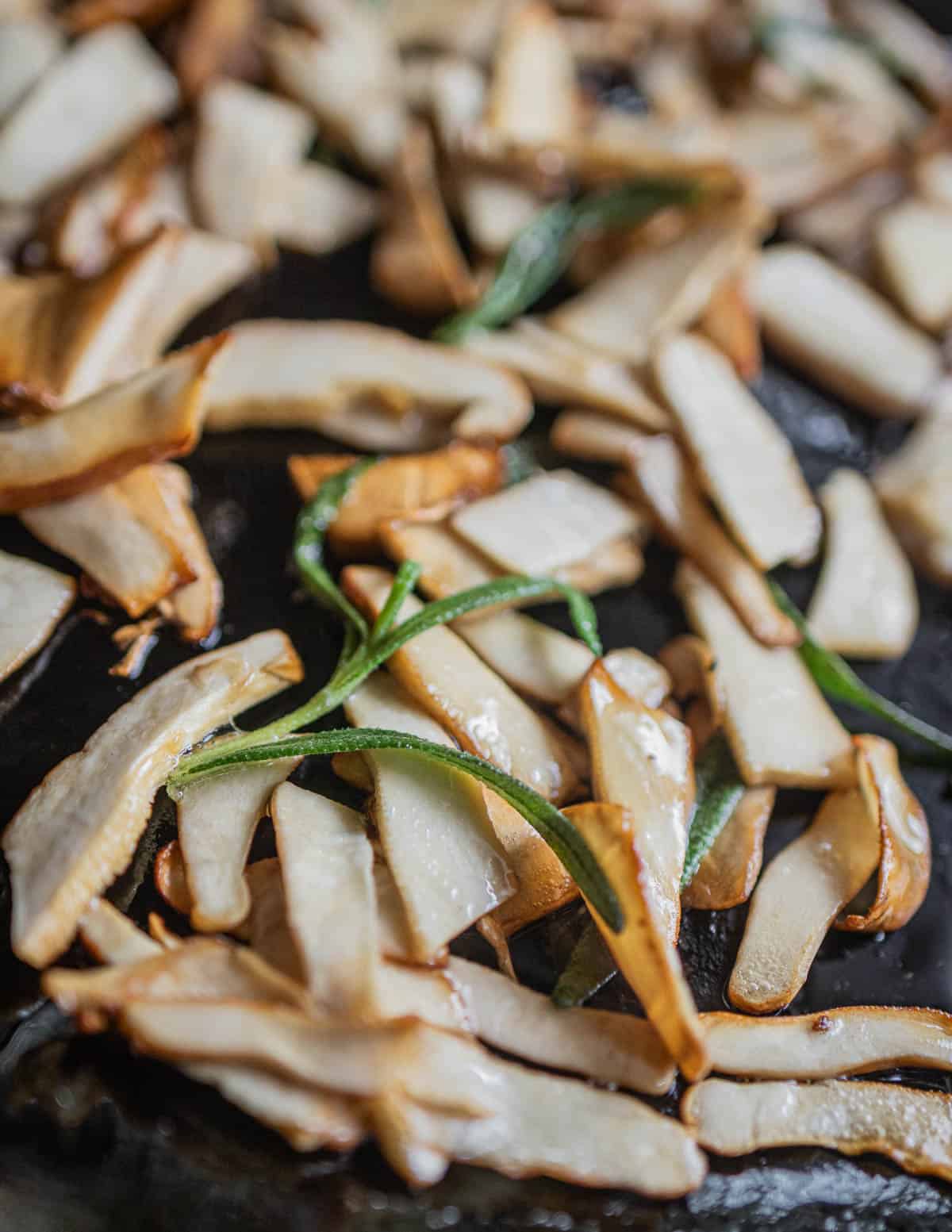
Berkeley's polypore is very similar to the black staining polypore, a tough mushroom that makes one of the best broths I've had. They have a meaty taste like maitake with an earthy black trumpet sweetness I crave. Since most of the weight of the mushroom is lost to trimming I was excited to make soups and stocks to see if the two mushrooms were comparable there.
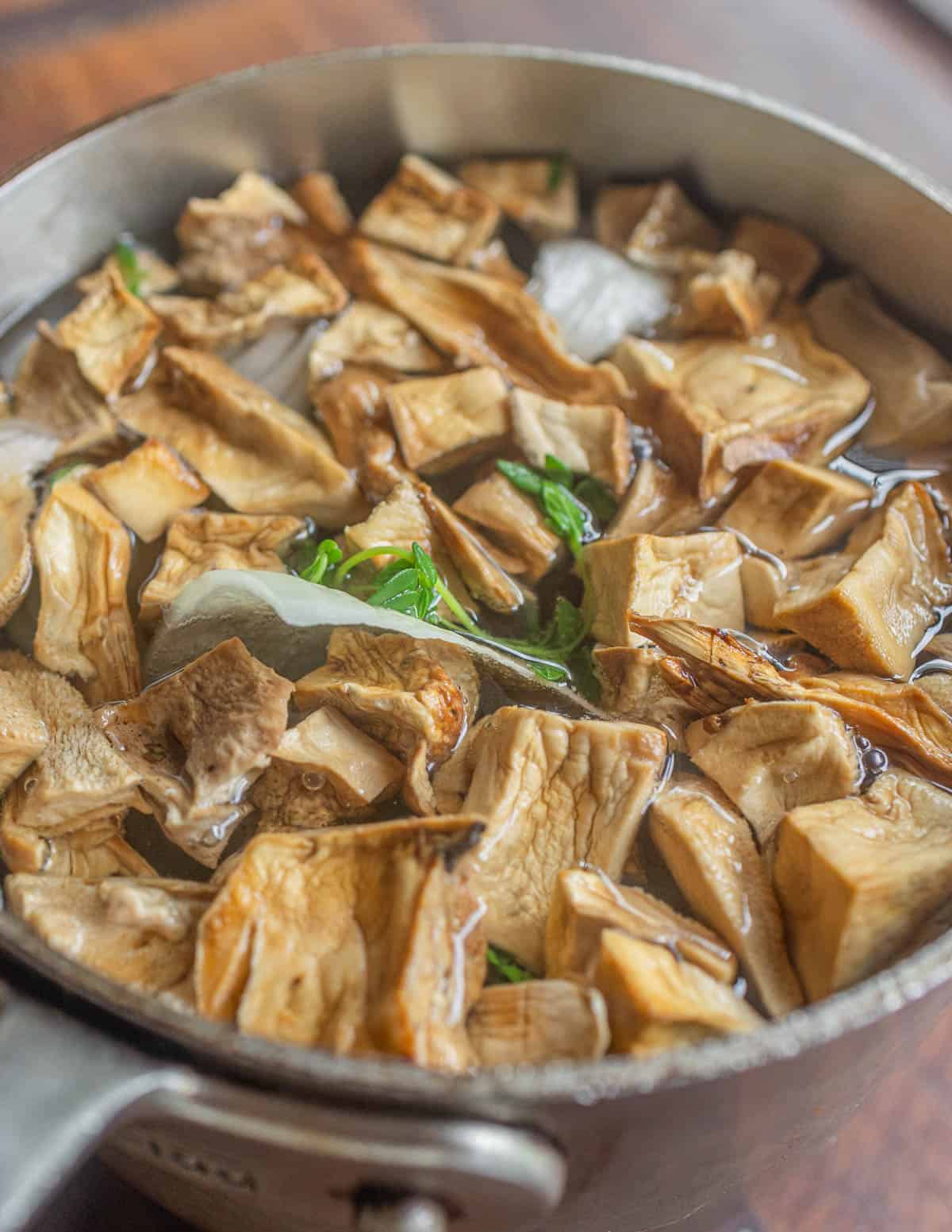
Unfortunately all broths I've made so far from fresh and dried B. berkeleyi were mild and lacking in flavor compared to most other mushrooms, although fresh mushrooms tasted better to me than dried.
That said, the tender edges, quickly browned in oil and seasoned with salt were great in soup. Unlike other soup mushrooms like mica caps I add right to the broth, lightly browning the thinly sliced mushrooms in a pan before adding them to broth improved their flavor.

After a week of cooking them every day, two Berkeley's polypore recipes stood out from the rest. My favorite was simply sauteed with a sprig of rosemary, salt and pepper.
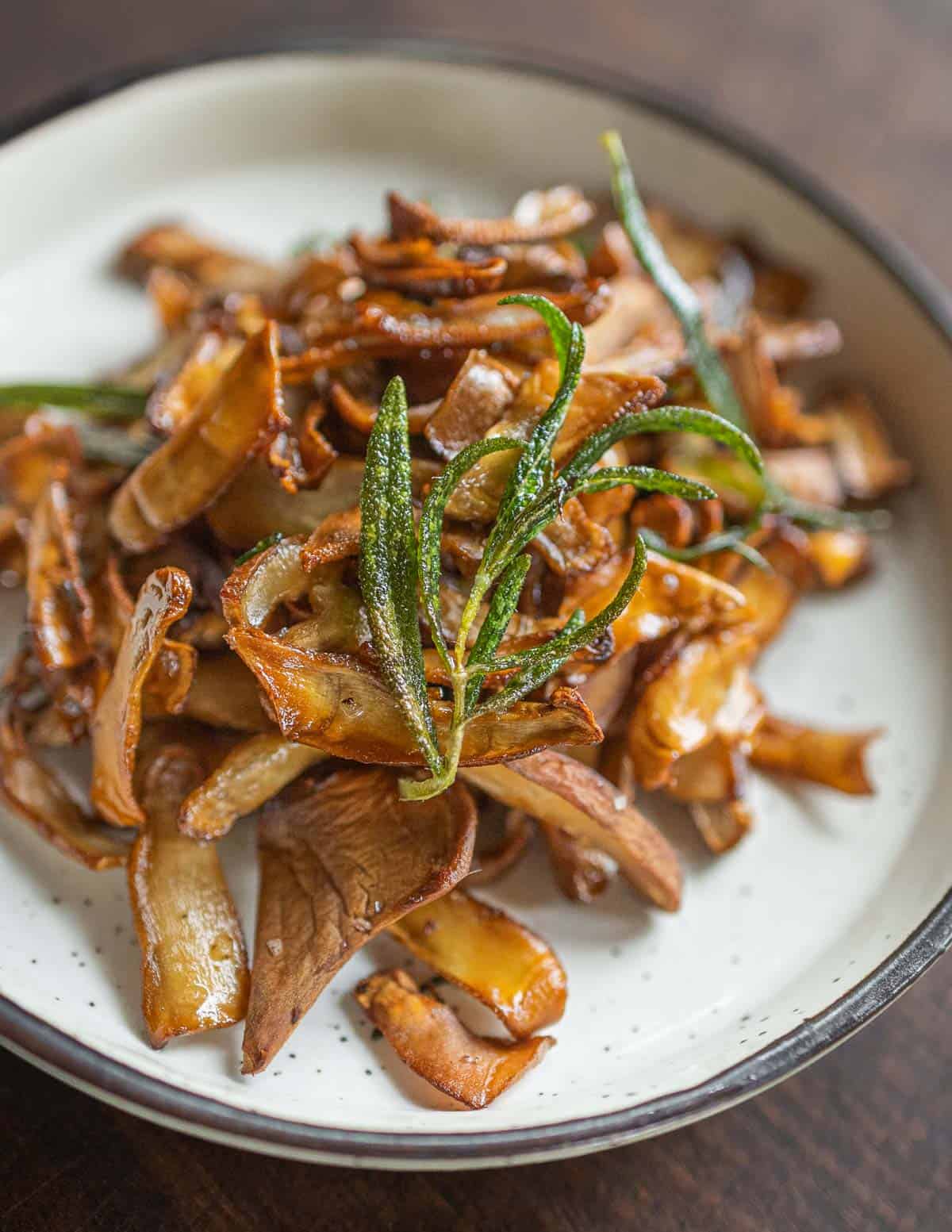
Lowering the heat and adding another splash of oil results in crisp mushroom chips scented with fried rosemary pictured above. If you have some you want to try it's a good place to start. See the recipe here.
After making the duxelles I also liked a quick Berkeley's polypore spaghetti al limone. It's a simple pasta I make with chicken of the woods that works well as the mushrooms taste similar.

Any recipes that uses mushroom duxelles will be good, but cooking the mushrooms down for duxelles and adding a splash of wine or brandy and herbs then binding them with a spoonful of sour cream to make mushroom caviar was fantastic, although not quite the equal of black staining polypore pictured below.

Have you eaten these mushrooms or have anything to share? Leave a comment if you have, I'd love to hear about other people's experiences.

Passing Fancy
I have had them a few different ways now, you're right that sautee works best. They also REALLY absorb flavor and fat, really can be a fantastic method of making sauces/duxelle.
Alan Bergo
Thanks for sharing.
Mark Sprinkle
Also, “BONDARZEWIA!” is awesome, and should be used as an exclamation whenever something mycological is most excellent, maybe featured in the next hit series, Teenage Mutant Ninja Polypores..
Alan Bergo
Hahahaha. Heroes on a tree stump. Fungal power.
Mark Sprinkle
These are not uncommon in central VA where I live, or in north Georgia where I forage regularly, and I can confirm that they are edible if a less-interesting culinary cousin the the BSP, etc. if you catch them fairly early (which can still mean a foot across) and trim off an inch or more of the growing edge in place, they will even keep growing and may give you a second harvest. At that stage, you don’t always have to slice them super thin, either—even ¼” chunks can be tender, and I’ve found that they take to your wild mushroom conserve recipe really well, too. Either fresh or conserved, they are meaty and resilient enough to use as the “meat” in a vegetarian curry, where you’re not really depending on them for flavor so much. Long, slow cooking works wonders, of course, even if they weren’t particularly tough to start with, and they retain firmness better than Laetiporus, for instance. So, not a go-to, but worth canning a few jars to stick in the pantry, especially if you are in a place (or stage of life) where you aren’t swimming in the better known and better tasting regulars.
Alan Bergo
Thanks Mark.
B rad
Outstanding post. I found some yesterday in East Atl. I wasn't sure what i could do with them and now I do! Thx again for the post and your time involved on the R&D.
Alan Bergo
Thanks Brad. I had a lot of fun working with these.
Pixie
Wow, what an inspiring post, Alan! Now I just need to find one...
Do you think parboiling the slightly older ones in salted water to tenderize them and remove the bitter flavor would work?
Carla Beaudet
I tried (though not rigorously, as you have) to cook Berkeley's polypore a very long time ago and wrote it off as inedible. But with your encouragement, if I find more in the young fresh stage, I will have to revisit that assessment. A little disappointing to learn that it doesn't make a good stock, because that's how I use Meripilus sumstineii, which, like Berkeley's, is generally too tough to eat.
Joseph Miller
I just literally just had some! One of my favorites.
Andrea Were
Such great info!
I had no idea about their edibility!
I’ve only ever met one growing under an old oak tree & it was massive @ 2ft in diameter!
Dan F
> a mild chicken of the woods.
OK, I laughed at that.
Alan Bergo
Diet chicken of the woods 😆. I also smoked some for duxelles to make dip which was great. Also- go check your chant spots I crushed them last night!